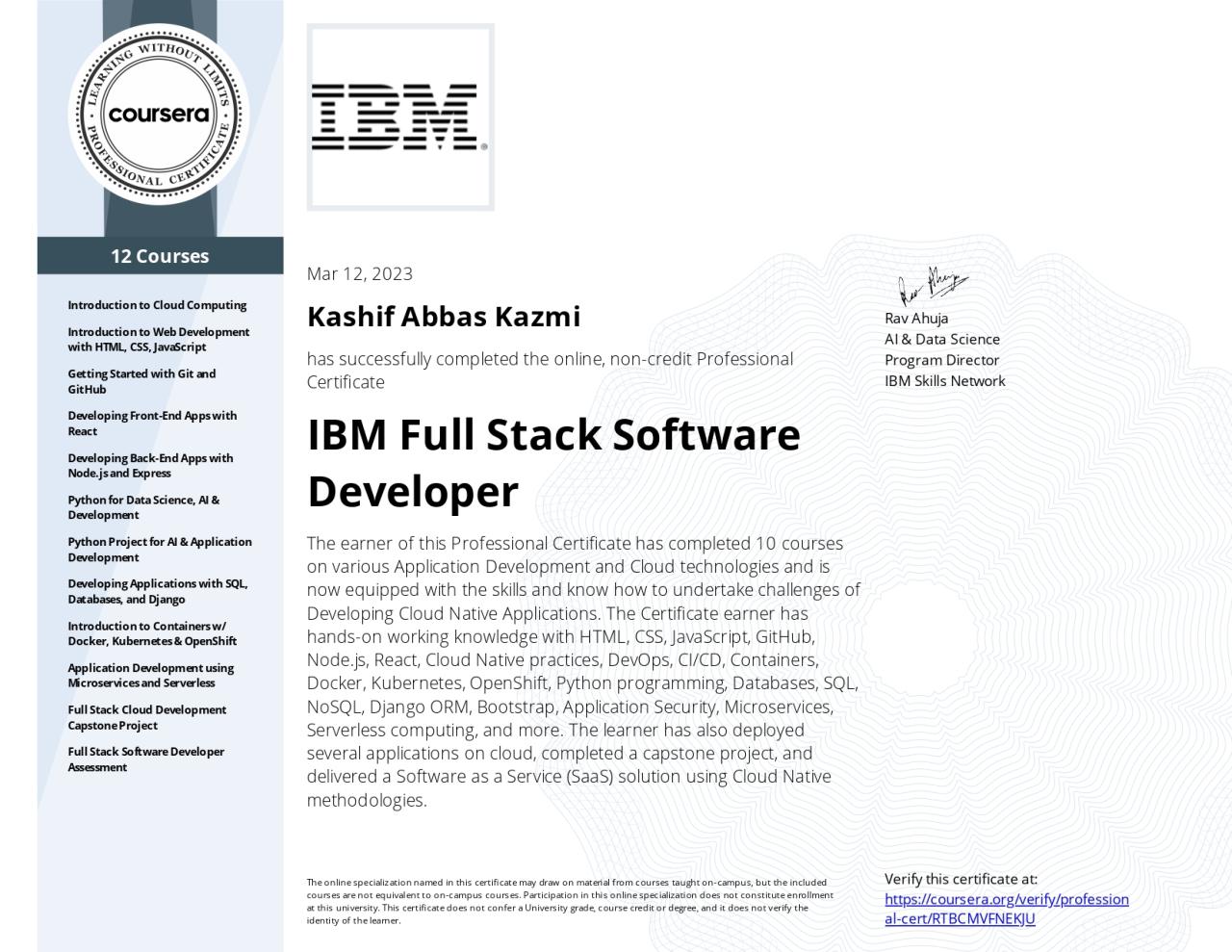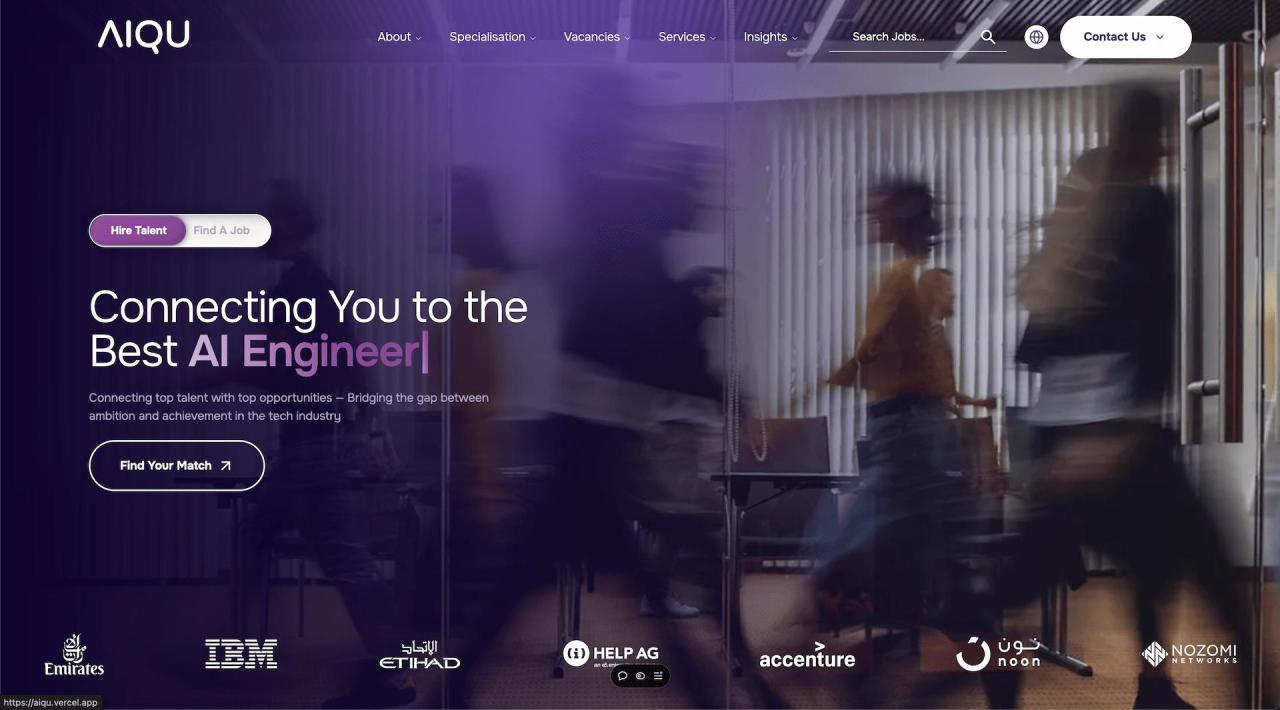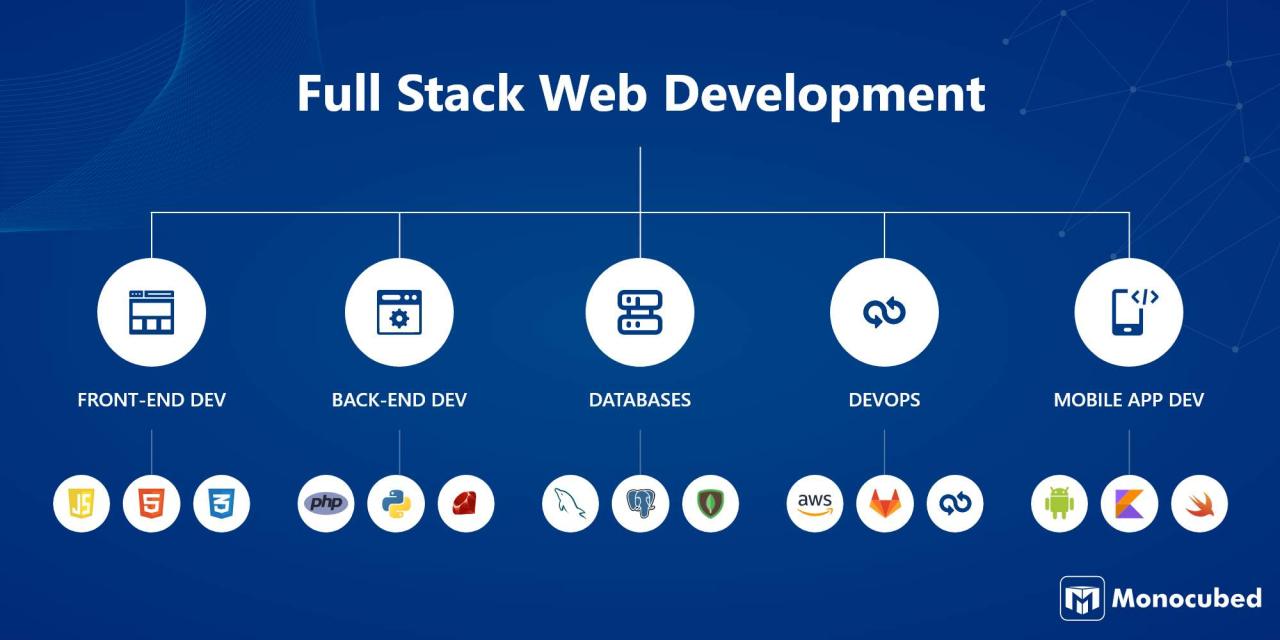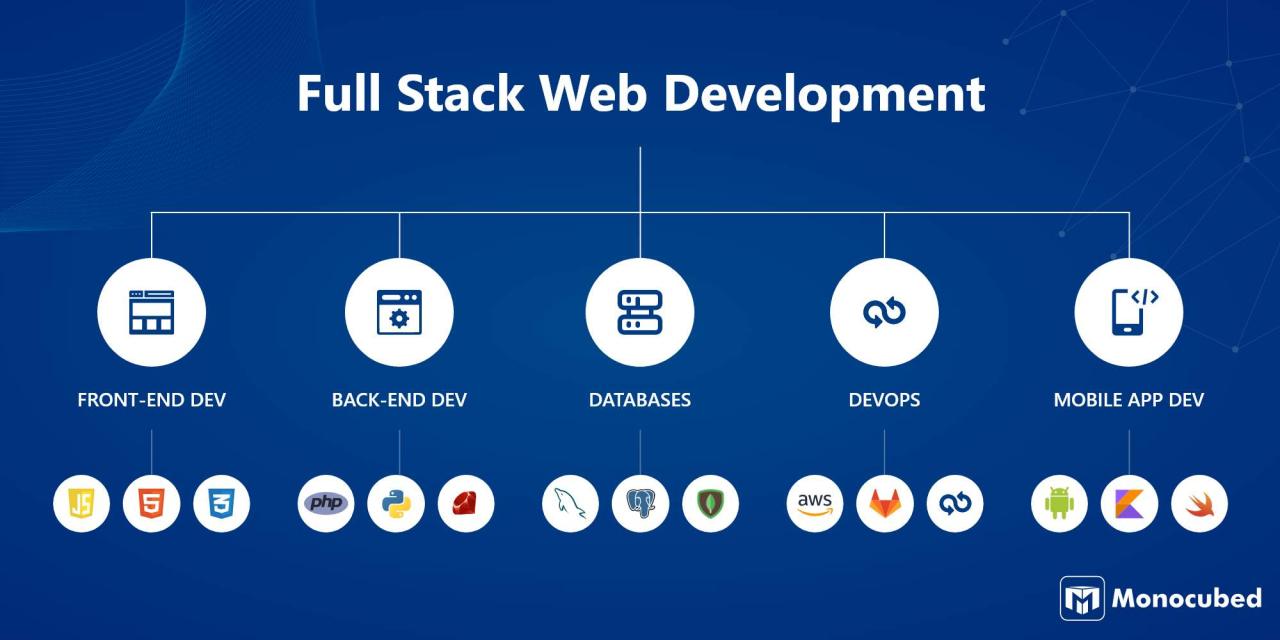Full stack developer – Full stack developer: It’s a title that conjures images of coding ninjas wielding JavaScript, Python, and SQL with equal proficiency. But what does it
-really* mean to be a full stack developer? This guide dives deep into the skills, technologies, and career paths that define this exciting and in-demand role, demystifying the process and showing you what it takes to build amazing web applications from concept to deployment.
We’ll explore the crucial difference between front-end and back-end development, examining the technologies involved in each. You’ll learn about essential hard skills like programming languages and databases, as well as the often-overlooked soft skills that are equally important for success. We’ll cover different development methodologies, version control, and even touch upon the impact of emerging technologies like AI and blockchain on the future of full stack development.
By the end, you’ll have a solid understanding of the full stack developer journey and the many possibilities it offers.
Defining Full Stack Development: Full Stack Developer
Full-stack development encompasses the entire process of building and deploying a web application, from the front-end user interface to the back-end database and server-side logic. It requires a broad skillset, blending creativity and technical expertise.
Core Competencies of a Full-Stack Developer
Full-stack developers possess a diverse range of skills, bridging the gap between front-end and back-end development. These include proficiency in various programming languages, databases, and frameworks, along with a strong understanding of user experience (UX) and user interface (UI) design principles.
Typical Technology Stack Used by Full-Stack Developers
The specific technologies used vary depending on project requirements, but a common stack might include JavaScript, React or Angular (front-end), Node.js or Python (back-end), and a database like MongoDB or PostgreSQL. Other popular choices include frameworks like Vue.js, Ruby on Rails, and databases such as MySQL and SQL Server.
Front-End and Back-End Development Roles in Full-Stack Context
Front-end development focuses on the user interface – what the user sees and interacts with. Back-end development handles the server-side logic, databases, and APIs. A full-stack developer manages both aspects, ensuring seamless integration and functionality.
Common Front-End and Back-End Technologies
| Front-End Technology | Description | Back-End Technology | Description |
|---|---|---|---|
| HTML | Structure of web pages | Node.js | JavaScript runtime environment |
| CSS | Styling of web pages | Python (Django/Flask) | Server-side scripting language |
| JavaScript (React, Angular, Vue.js) | Interactive elements and dynamic behavior | PHP (Laravel/Symfony) | Server-side scripting language |
| TypeScript | Superset of JavaScript | Java (Spring) | Server-side programming language |
Full Stack Developer Skills
Success as a full-stack developer hinges on a blend of technical expertise and soft skills. Continuous learning is crucial in this ever-evolving field.
Essential Hard Skills for a Full-Stack Developer
- Proficiency in multiple programming languages (e.g., JavaScript, Python, Java)
- Understanding of front-end frameworks (e.g., React, Angular, Vue.js)
- Experience with back-end technologies (e.g., Node.js, Django, Spring)
- Database management skills (SQL and NoSQL databases)
- API design and integration
- Version control (Git)
- Testing and debugging
Importance of Soft Skills for Full-Stack Developers

Beyond technical skills, strong communication, teamwork, and problem-solving abilities are essential for effective collaboration and project success. The ability to clearly articulate technical concepts to both technical and non-technical stakeholders is invaluable.
So you want to be a full stack developer? That means you’ll need a broad skillset, covering everything from front-end design to back-end database management. It’s a bit like managing a football team – you need a strong strategy for every position, much like how Thorup outlines City striker plans after Ashley Barnes exit , needing a solid plan to replace a key player.
Ultimately, being a full stack developer requires similar strategic planning and diverse expertise to achieve success.
Value of Continuous Learning in Full Stack Development
The technology landscape is constantly evolving. Continuous learning through online courses, workshops, and personal projects is crucial to staying current with the latest tools and techniques. This ensures adaptability and competitiveness in the job market.
Problem-Solving Process of a Full-Stack Developer
A flowchart would visually represent the iterative process: Understanding the problem -> Designing a solution -> Implementing the solution -> Testing -> Debugging -> Deployment -> Monitoring and Maintenance. Each step involves careful consideration of both front-end and back-end aspects.
The Full Stack Development Process
Building a web application involves a structured approach, encompassing design, development, testing, and deployment. Different methodologies guide this process.
Step-by-Step Guide for Building a Simple Web Application

- Plan and Design: Define features, user stories, and database schema.
- Front-End Development: Create the user interface using HTML, CSS, and JavaScript.
- Back-End Development: Build the server-side logic, APIs, and database interactions.
- Testing: Thoroughly test both front-end and back-end components.
- Deployment: Deploy the application to a live server.
Development Methodologies (Agile, Waterfall)
Agile emphasizes iterative development and collaboration, while Waterfall follows a linear sequential approach. Agile is generally preferred for its flexibility and adaptability to changing requirements.
Deploying a Web Application to a Live Server
This involves configuring a server (e.g., using platforms like AWS, Google Cloud, or Heroku), setting up the necessary environment, and deploying the application code and database.
Use of Version Control Systems (Git)
Git is crucial for managing code changes, collaboration, and tracking the development history. It allows for easy rollback to previous versions and efficient teamwork.
So you want to be a full stack developer? It’s a challenging but rewarding path, requiring diverse skills. Think of it like building a whole stadium – you need to manage everything, from the foundation (backend) to the final touches (frontend). News unrelated, but check out how Burnley’s manager is strategizing for their next season after a key player left: Thorup outlines City striker plans after Ashley Barnes exit.
Just like that manager needs a solid plan, you need a solid plan to become a successful full stack developer, too!
Specializations within Full Stack Development

While full-stack developers have broad skills, specializations often emerge around specific technology stacks. Emerging technologies continue to reshape the field.
Comparison of Different Specializations (MERN, MEAN Stack)
MERN (MongoDB, Express.js, React, Node.js) and MEAN (MongoDB, Express.js, Angular, Node.js) stacks are popular choices. The main difference lies in the front-end framework used (React vs. Angular).
Advantages and Disadvantages of Specializing in a Particular Stack
Specialization offers in-depth expertise, but may limit versatility. A broad understanding of multiple technologies provides greater flexibility and adaptability.
Impact of Emerging Technologies (AI, Blockchain)
AI and blockchain are increasingly integrated into web applications, creating new opportunities and challenges for full-stack developers. This requires continuous learning and adaptation to these technologies.
Popular Full-Stack Development Frameworks, Full stack developer
- React
- Angular
- Vue.js
- Node.js
- Django
- Ruby on Rails
- Spring Boot
Final Review
So, you’ve journeyed through the world of full stack development – from understanding the core competencies to exploring career paths and specialized stacks. The path might seem challenging, but the rewards are immense. The ability to build entire applications, from the user interface to the database, empowers you to bring your creative vision to life and solve real-world problems.
So you want to be a full stack developer? Awesome! That means you’ll need a solid grasp of both front-end and back-end technologies. To really nail down your path, check out this super helpful guide on full stack developer career path and required skills to understand what skills you’ll need to build a successful career. Becoming a full stack developer is a challenging but rewarding journey!
Remember, continuous learning is key in this ever-evolving field. Embrace the challenge, master the skills, and watch your career soar as a sought-after full stack developer.
FAQ Summary
What’s the average salary for a full stack developer?
Salaries vary greatly based on experience, location, and specific skills. However, expect a competitive salary, generally higher than for specialized front-end or back-end roles.
How long does it take to become a full stack developer?
It depends on your prior experience and learning pace. Bootcamps offer intensive programs, while self-learning can take longer. Expect at least several months of dedicated study and practice.
What are some common mistakes junior full stack developers make?
Common mistakes include neglecting testing, poor code organization, and insufficient understanding of security best practices. Focus on building a solid foundation in these areas.
Is it better to specialize in a particular stack (e.g., MEAN, MERN)?
Specializing can lead to deeper expertise, but being proficient in multiple technologies offers greater versatility and adaptability.
